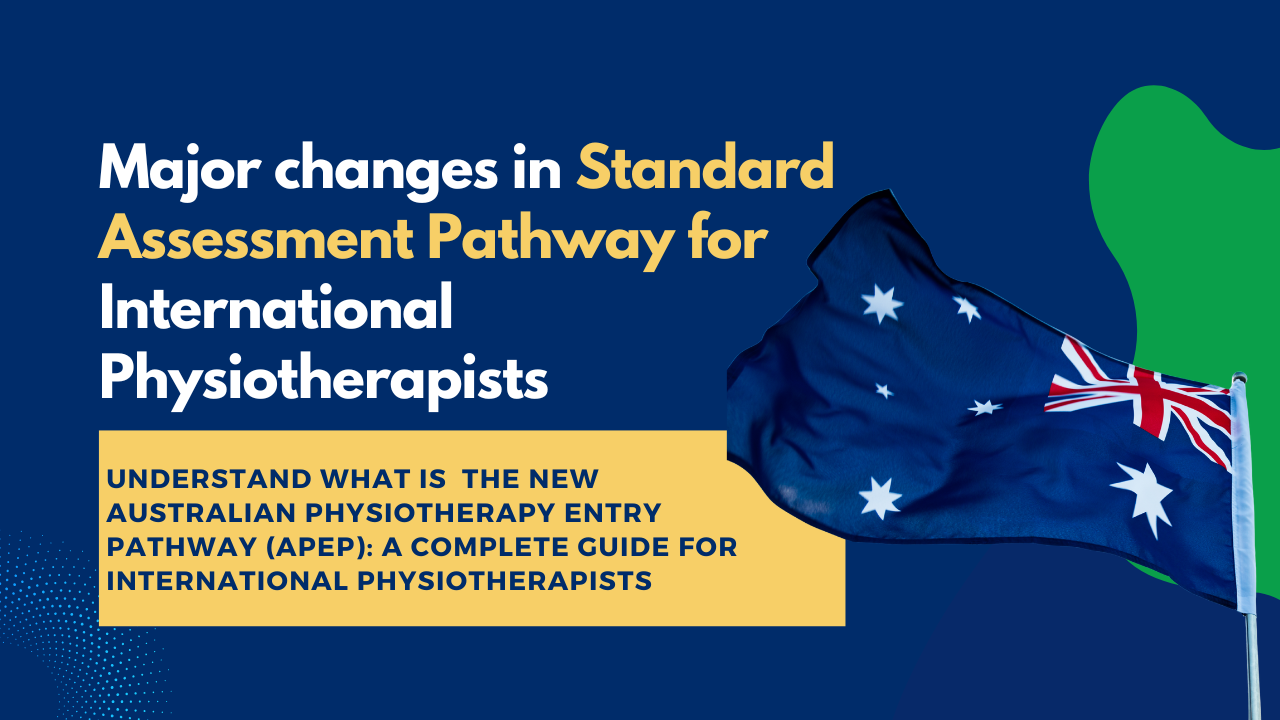Australia’s healthcare sector is experiencing a significant demand for physiotherapists, driven by an ageing population and an increase in chronic health conditions. This comprehensive guide explores physiotherapists employment opportunities in Australia, offering detailed insights into the profession, including current employment statistics, salary expectations, and pathways for both domestic and internationally trained practitioners.
Thank you for reading this post, don't forget to subscribe!Scope of Physiotherapy in Australia
Physiotherapy is a cornerstone of Australia’s healthcare system, addressing a wide range of health issues. Practitioners are involved in:
- Musculoskeletal Physiotherapy: Managing conditions such as back pain, arthritis, and sports injuries.
- Neurological Physiotherapy: Assisting patients with disorders like stroke and Parkinson’s disease.
- Cardiorespiratory Therapy: Providing care for individuals with chronic respiratory diseases.
- Paediatric Physiotherapy: Focusing on developmental disorders in children.
- Geriatric Care: Addressing mobility issues and age-related musculoskeletal problems in the elderly.
The demand for physiotherapy in Australia is escalating. Notably, the healthcare and social assistance sector experienced a 4.3% growth in filled jobs in the September quarter of 2024, contributing to an annual growth of 11.4%. This surge reflects the increasing need for physiotherapy services across the nation.
Pathways to Becoming a Physiotherapist in Australia
Domestic Pathway
Aspiring physiotherapists in Australia typically follow these steps:
- Education: Complete an accredited Bachelor or Master of Physiotherapy program.
- Registration: After graduation, apply for general registration with the Physiotherapy Board of Australia through the Australian Health Practitioner Regulation Agency (Ahpra).
International Pathway
For overseas trained physiotherapists:
- Qualification Assessment: Submit your credentials to the Australian Physiotherapy Council (APC) for evaluation.
- Competency Exams: Pass the APC written and clinical examinations.
- Registration: Upon successful assessment, apply for registration with the Physiotherapy Board of Australia via Ahpra.
Optimal Locations for Physiotherapy Practice In Australia
Australia’s physiotherapy workforce distribution reveals a significant concentration in urban centers, leading to disparities in healthcare access between metropolitan and rural areas. This analysis provides detailed insights into employment opportunities, challenges, and incentives associated with urban and rural physiotherapy practice in Australia.
Urban Centers: Employment Opportunities and Challenges
Approximately 70% of Australia’s physiotherapists are employed in metropolitan areas, including major cities such as Sydney, Melbourne, and Brisbane. These urban centers offer a high concentration of healthcare facilities, providing numerous employment opportunities for physiotherapists. The advantages of practicing in urban settings include access to advanced medical facilities, opportunities for specialization, and a diverse patient population. However, these benefits are accompanied by challenges such as higher competition for positions and potentially higher living costs.
Regional and Rural Areas: Addressing Workforce Shortages
In contrast, regional and rural areas face a persistent undersupply of physiotherapists. The Australian Physiotherapy Association reports that 16% of physiotherapists work in regional centers, 14% in rural towns, and only 1% in remote communities. This maldistribution contributes to a healthcare divide, with rural residents experiencing higher rates of hospitalizations, deaths, and injuries, coupled with reduced access to primary healthcare services.
Incentives and Initiatives for Rural Practice
To mitigate these disparities, several initiatives have been implemented to attract physiotherapists to rural and remote areas in Australia:
- Educational Programs: Universities such as the University of Southern Queensland have introduced physiotherapy degrees at regional campuses, enabling students to study without relocating to cities. This approach aims to recruit and retain local talent, thereby stabilizing the regional healthcare workforce.
- Financial Incentives: Practitioners in rural areas may receive benefits such as relocation assistance, higher starting salaries, and opportunities for rapid career progression due to workforce shortages.
Rural vs. Urban Physiotherapy Employment: Comparative Insights
Choosing between rural and urban physiotherapy practice settings involves several considerations:
- Scope of Practice: Rural physiotherapists are more likely to be generalists, managing a broader range of conditions. Approximately 30% of rural and remote physiotherapists identify as generalists, compared to 10% in metropolitan areas.
- Professional Isolation: Rural practitioners may face limited access to specialized equipment and professional development opportunities, leading to potential professional isolation.
- Community Engagement: Working in rural areas often fosters a strong sense of community and professional fulfillment, as practitioners provide essential services to underserved populations.
Opportunities for Overseas Trained Physiotherapists
Australia actively seeks qualified physiotherapists from abroad. The process involves:
- Qualification Assessment: The APC evaluates your educational background and professional experience.
- Competency Examinations: Passing the APC’s assessments is mandatory.
- Registration: Apply for general registration with the Physiotherapy Board of Australia through Ahpra.
Physiotherapists Salary Packages in Australia
Physiotherapists in Australia can anticipate the following salary ranges:
- Average Salary: AU$75,200 per year (AU$35.60 per hour), which is approximately 8% higher than the national average salary.
- Entry-Level Positions: Starting salaries around AU$43,600 annually.
- Experienced Physiotherapists: Potential to earn up to AU$125,000 per year.
The healthcare and social assistance sector has been a significant contributor to employment growth, with 109,700 jobs added in the September quarter of 2024. .
Employment Requirements for Australian Physiotherapists
To practice as a physiotherapist in Australia, candidates must:
- Hold Accredited Qualifications: A degree from a recognized physiotherapy program.
- Obtain Professional Registration: Current registration with the Physiotherapy Board of Australia.
- Gain Clinical Experience: Varies by role; some positions require extensive experience.
- Demonstrate Key Competencies: Strong communication skills, patient-centered care, teamwork, and a commitment to continuous professional development (CPD).
- Maintain Continuous CPD Activities: Physiotherapists must complete ongoing CPD activities to retain their professional registration.
Crafting a Competitive Resume for a Physiotherapy Job in Australia
A well-structured resume is essential for securing physiotherapy positions in Australia. It should align with industry standards and highlight key qualifications, experience, and professional development.
Essential Sections for a Physiotherapy Resume
- Professional Summary
- Provide a concise overview of your qualifications, areas of expertise, and career goals.
- Mention your AHPRA (Australian Health Practitioner Regulation Agency) registration and any relevant specializations (e.g., musculoskeletal, sports, neurological physiotherapy).
- Education & Accreditation
- List your physiotherapy degree from an accredited institution.
- Include additional qualifications, such as postgraduate studies or certifications.
- State your registration with the Physiotherapy Board of Australia (mandatory for practicing physiotherapists).
- Clinical Experience
- Detail previous roles, responsibilities, and key achievements in various healthcare settings (e.g., private practice, hospital, aged care, rehabilitation centers).
- Highlight experience with specific patient populations or specialties, such as NDIS, aged care, or occupational health.
- Provide measurable outcomes where possible (e.g., “Successfully rehabilitated 50+ post-operative patients with a 90% satisfaction rate”).
- Skills & Competencies
- Showcase technical and soft skills relevant to Australian healthcare settings, including:
- Patient assessment and treatment planning
- Manual therapy and exercise prescription
- Pain management techniques
- Use of assistive technology and mobility aids
- Strong communication and teamwork abilities
- Showcase technical and soft skills relevant to Australian healthcare settings, including:
- Professional Development & CPD Compliance
- List continuing professional development (CPD) activities, as maintaining CPD hours is mandatory for AHPRA registration.
- Include workshops, seminars, certifications (e.g., Dry Needling, Hydrotherapy, Advanced Sports Rehabilitation), and any physiotherapy courses completed.
- Highlight any involvement in research, teaching, or mentoring within the physiotherapy field.
- Licensing & Legal Requirements
- Mention necessary clearances such as:
- AHPRA registration (essential)
- First Aid & CPR certification
- National Police Check & Working with Children Check (required for certain roles)
- NDIS Worker Screening Clearance (if working in disability support)
- Mention necessary clearances such as:
- Tailoring for the Australian Job Market
- Use clear, professional formatting (avoid excessive graphics).
- Customize your resume for each job by aligning it with the specific role’s key selection criteria.
- Ensure compliance with Australian physiotherapy standards and employer expectations.
A well-prepared, targeted resume increases your chances of securing employment in Australia’s competitive physiotherapy job market.
How Physiomates Supports Physiotherapists Employment Opportunities in Australia
Physiomates is a platform created by physiotherapists, for physiotherapists, designed to help both local and internationally trained professionals successfully establish their careers in Australia. Understanding the challenges of navigating the job market, meeting regulatory requirements, and adapting to the healthcare system, Physiomates provides targeted support through its exclusive membership program.
Key Ways Physiomates Assists Physiotherapists
- Guidance on AHPRA Registration
Physiomates simplifies the Australian Health Practitioner Regulation Agency (AHPRA) registration process, ensuring that physiotherapists meet all the necessary criteria to practice legally in Australia. Their structured approach saves time and eliminates common mistakes that could delay registration. - Comprehensive Exam Preparation
Many international physiotherapists must pass the Australian Physiotherapy Council (APC) Written and Clinical Exams. Physiomates offers training, practical mock exams, and personalized coaching to help candidates confidently clear these assessments. - Job Placement Assistance
Finding a job as a physiotherapist in Australia can be competitive, especially for overseas-trained professionals. Physiomates supports job seekers by:- Connecting them with recruiters and employers looking for skilled physiotherapists.
- Assisting with CV and cover letter preparation to increase interview chances.
- Providing interview coaching to help candidates stand out.
- One-on-One Mentorship
Physiomates offers mentoring sessions with experienced physiotherapists who provide guidance on clinical challenges, patient management strategies, and career progression. This mentorship ensures a smooth transition into the Australian healthcare environment. - Physiotherapy CPD Courses
Staying up to date with industry standards is crucial for career growth. Physiomates provides access to a range of online physiotherapy courses and CPD opportunities, ensuring that members fulfill their annual CPD requirements while expanding their skills.
Why Physiomates?
Unlike generic recruitment agencies or exam coaching platforms, Physiomates is built by physiotherapists who have firsthand experience overcoming the hurdles of working in Australia. Their membership program offers a community-driven approach, ensuring that every physiotherapist—whether local or international—gets the support they need to succeed in their profession.
Conclusion
Australia offers strong employment prospects for physiotherapists, with growing demand in both urban and rural areas. Navigating the healthcare system, meeting regulatory requirements, and securing the right job can be challenging, especially for overseas professionals. Physiomates, created by physiotherapists for physiotherapists, provides essential support, including job placement assistance, mentorship, and CPD courses, making the transition smoother. With the right resources and guidance, building a successful physiotherapy career in Australia is within reach.







